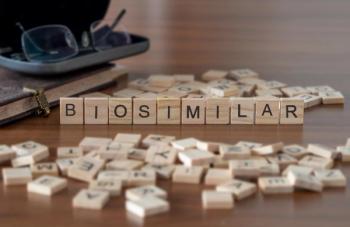
Venetoclax, Obinutuzumab Combo Leads to Improved Quality of Life in Patients with CLL
The current observational, longitudinal study focused on patient-reported outcomes on functioning, symptoms, and quality of life in patients with chronic lymphocytic leukemia.
Rapid and sustained improvement in physical functioning, role functioning, and global health status/quality of life (GHS/QoL) as measured by patient-reported outcomes (PRO) can be achieved with a tolerable, fixed-duration treatment with venetoclax plus obinutuzumab (VenG), according to data from the phase 3 CLL14 trial.
The study results were presented at the 61st American Society of Hematology Annual Meeting and Exposition held this week in Orlando, FL.
It has been previously reported that treatment with VenG achieved significantly longer progression-free survival compared with chlorambucil-obinutuzumab (CIbG).2 The current observational, longitudinal study focused on PROs on functioning, symptoms, and QoL in patients treated in the CLL14 study.
In the phase 3 CLL14 trial, elderly patients with CLL and comorbidities were randomized to receive either ClbG or VenG over 12 cycles. Participants were asked to complete paper PRO questionnaires at each treatment cycle and every 3 months during follow-up. Changes in physical functioning, role functioning, and GHS/QoL were assessed using the EORTC Quality of Life Questionnaire Core 30.
According to the PRO data, physical and role functioning levels were maintained throughout treatment and follow-up, with no relevant improvement or deterioration. Patients treated with VenG showed a meaningful improvement in GHS/QoL during treatment and follow-up at cycle 3 compared with a less pronounced and consistent improvement with ClbG at cycle 8.
Additionally, insomnia and fatigue levels demonstrated improvement starting at cycle 3 in patients taking VenG, whereas researchers observed the same level of improvement at cycle 4 and 6 in patients with ClbG.
Researchers observed that CLL symptoms, core cancer symptoms, and symptom interference were generally low and comparable between groups. No clinically meaningful improvements were seen in either group during treatment or follow-up.
Patients treated with either CIbG or VenG had no impairment to physical functioning, role functioning, and GHS or QoL during treatment and follow-up, nor increase in symptom burden and interference, according to the study. Overall, the analysis showed that patients treated with VenG demonstrated earlier improvement on the GHS/QoL scale by approximately 5 months on average compared with patients treated with ClbG.
The authors indicated that, as elderly patients with CLL typically experience QoL impairment, particularly when suffering from various conditions, improvements like that seen in the CLL14 study should be considered a main therapeutic goal.
“Our data confirm that rapid and sustained improvement of QoL as measured by PRO can be achieved with a tolerable, fixed-duration treatment with VenG,” the authors concluded.
A separate analysis of the study, which was also presented at the meeting, examined
Reference
- Al-Sawaf O, Gentile B, Devine J, et al. Rapid Improvement of Patient-Reported Outcomes with Venetoclax Plus Obinutuzumab in Patients with Previously Untreated CLL and Coexisting Conditions: A Prospective Analysis from the CLL14 Trial. Presented at: 61st ASH Annual Meeting and Exposition, Orlando, Florida, December 9, 2019. Abstract 4305.
- Fischer K, Al-Sawaf O, Bahlo J, et al. Venetoclax and Obinutuzumab in Patients with CLL and Coexisting Conditions. Published June 6, 2019. New England Journal of Medicine. DOI: 10.1056/NEJMoa1815281. https://www.nejm.org/doi/full/10.1056/NEJMoa1815281. Accessed November 26, 2019.
Newsletter
Stay informed on drug updates, treatment guidelines, and pharmacy practice trends—subscribe to Pharmacy Times for weekly clinical insights.









































































































































































































